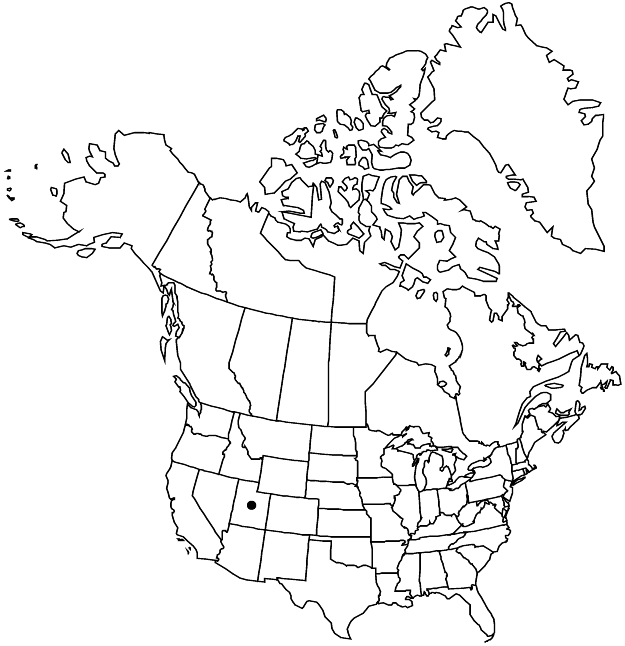Eriogonum ostlundii
Contr. W. Bot. 11: 12. 1903.
Herbs, spreading, not scapose, 2–3.5(–4.5) × 1–2.5 dm, glabrous, grayish. Stems spreading, without persistent leaf bases, up to 1/4 height of plant; caudex stems absent; aerial flowering stems erect, slender, solid, not fistulose, 0.8–2 dm, glabrous. Leaves basal, 1 per node; petiole 1–2.5(–3) cm, tomentose; blade elliptic to spatulate or broadly elliptic, 0.6–1.5(–2) × 0.5–1(–1.5) cm, densely white-tomentose abaxially, floccose and greenish adaxially, margins plane. Inflorescences cymose, 5–25(–30) × 5–15 cm; branches dichotomous, glabrous; bracts 3, scalelike, triangular, 0.8–2 mm. Peduncles erect, slender, (0.5–)1–3(–5) cm, glabrous. Involucres 1 per node, turbinate to turbinate-campanulate, 2–3 × 1.8–2(–2.2) mm, glabrous; teeth 5, erect, 0.5–0.8 mm. Flowers 1.5–2.5 mm; perianth white, glabrous; tepals connate proximal 1/5, monomorphic, obovate; stamens exserted, 2–4 mm; filaments pilose proximally. Achenes light brown, 2.5–3 mm, glabrous.
Phenology: Flowering May–Sep.
Habitat: Gravelly or clayey flats and slopes, sagebrush communities, pinyon-juniper and montane conifer woodlands
Elevation: 1600-2100 m
Discussion
Eriogonum ostlundii is relatively common in Piute and Sevier counties, and just enters Garfield County. It is similar to E. spathulatum and could be confused with infrequent, glabrous individuals of that species that occur in Beaver County on the western deserts of Utah. The United States Forest Service considers E. ostlundii to be a “sensitive” species.
Selected References
None.
